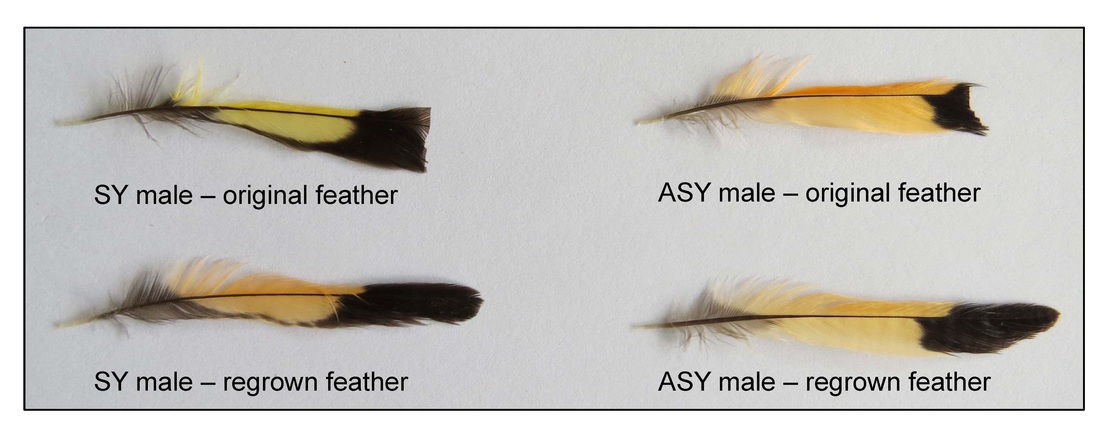I am very excited to share that our new paper on seasonal interactions (reprint) in the American Redstart (Setophaga ruticilla) system was just made available in early view in the journal Ecology and Evolution. My collaborators and I performed a feather replacement experiment on overwintering male redstarts in Jamaica. This is the first study to examine color acquisition in winter-grown feathers in situ in a Neotropical migrant.
We were seeking to determine the costs of feather loss in terms of the spectral quality of feathers. Carotenoid based plumage is important to sexual selection in redstarts, and birds frequently must replace feathers while on their wintering grounds, due to loss from agonistic interactions or predator avoidance. We found that there is a significant cost to plumage quality for older males when feathers are replaced on the wintering grounds, as replaced feathers are less saturated in red chroma, likely due to limited availability of carotenoid pigments in the winter diet. This effect is independent of habitat quality or physical condition. Furthermore, we found that young males re-grew more adult-like orange feathers, a result with implications for delayed plumage maturation in this species. The reduction in quality for adult males could carry-over to negatively impact breeding success through sexual selection on the breeding grounds, while the increase in adult-like appearance could have positive impacts on breeding success for young males. Overall this research has important implications for winter to breeding carry-over effects and the evolution of molt strategies in Neotropical migrants.
Many thanks to my outstanding co-authors: Kim Marini, Pete Marra, Ryan Germain, Rebecca Holberton, and Matt Reudink.
We were seeking to determine the costs of feather loss in terms of the spectral quality of feathers. Carotenoid based plumage is important to sexual selection in redstarts, and birds frequently must replace feathers while on their wintering grounds, due to loss from agonistic interactions or predator avoidance. We found that there is a significant cost to plumage quality for older males when feathers are replaced on the wintering grounds, as replaced feathers are less saturated in red chroma, likely due to limited availability of carotenoid pigments in the winter diet. This effect is independent of habitat quality or physical condition. Furthermore, we found that young males re-grew more adult-like orange feathers, a result with implications for delayed plumage maturation in this species. The reduction in quality for adult males could carry-over to negatively impact breeding success through sexual selection on the breeding grounds, while the increase in adult-like appearance could have positive impacts on breeding success for young males. Overall this research has important implications for winter to breeding carry-over effects and the evolution of molt strategies in Neotropical migrants.
Many thanks to my outstanding co-authors: Kim Marini, Pete Marra, Ryan Germain, Rebecca Holberton, and Matt Reudink.

 RSS Feed
RSS Feed